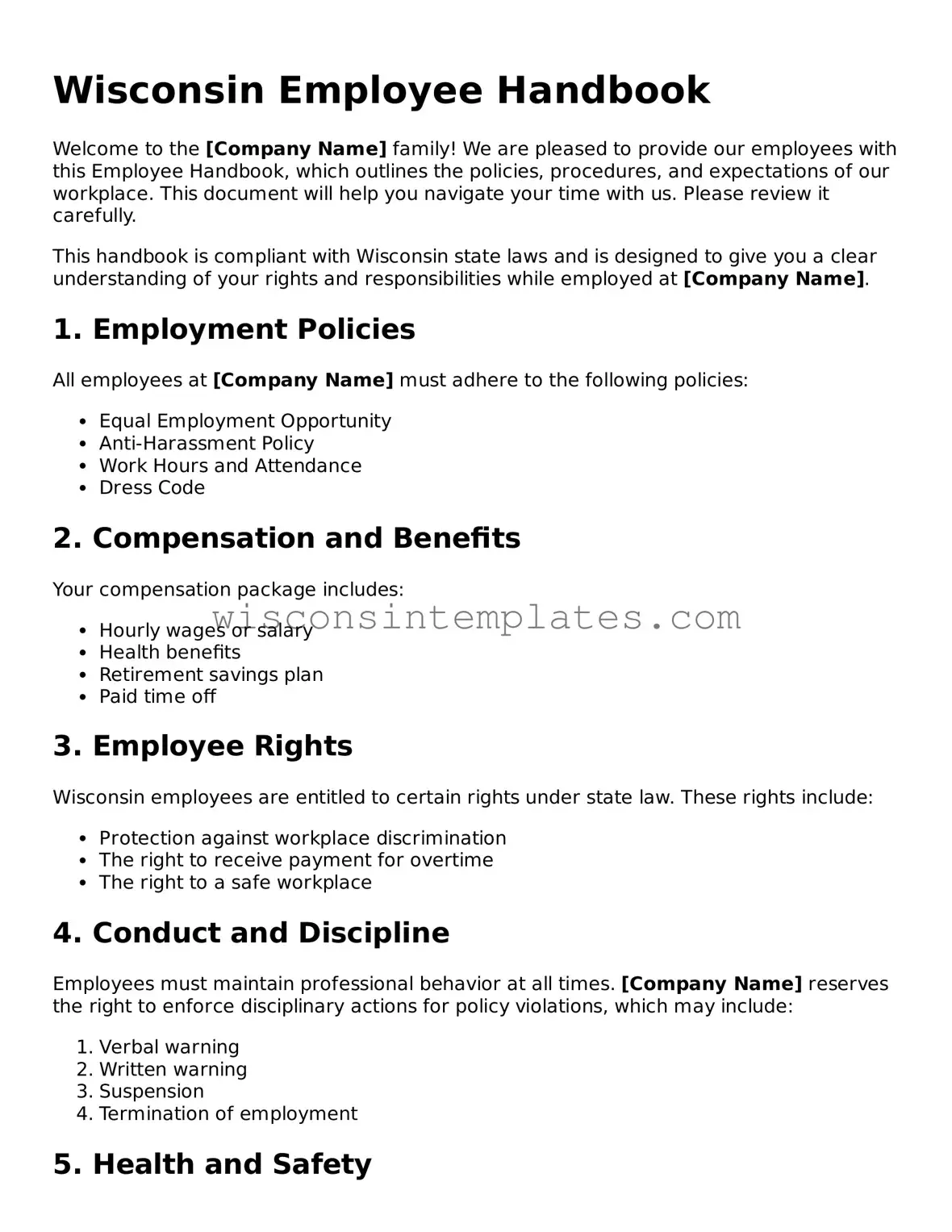Legal Employee Handbook Form for Wisconsin State
The Wisconsin Employee Handbook form serves as a crucial document that outlines the policies, procedures, and expectations within a workplace. This form helps both employers and employees understand their rights and responsibilities. By providing clear guidelines, it fosters a positive work environment and promotes compliance with state and federal laws.
Launch Editor Now
